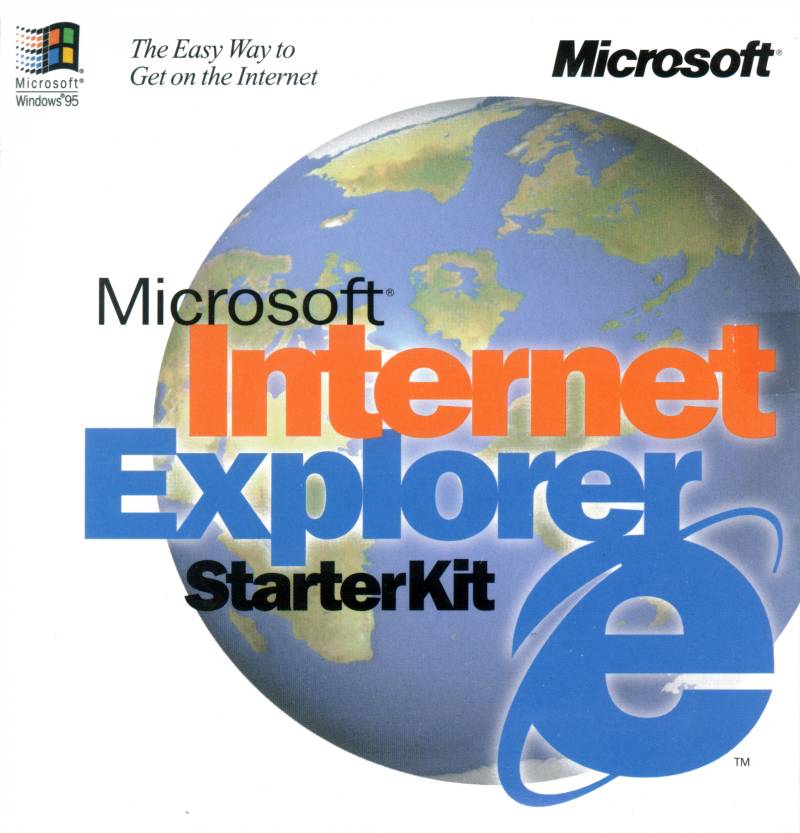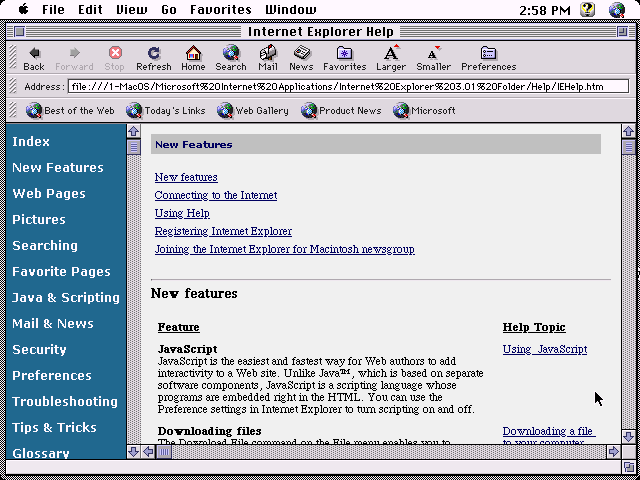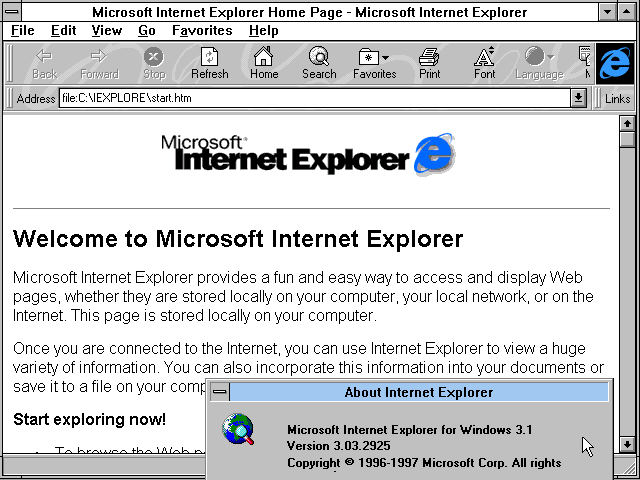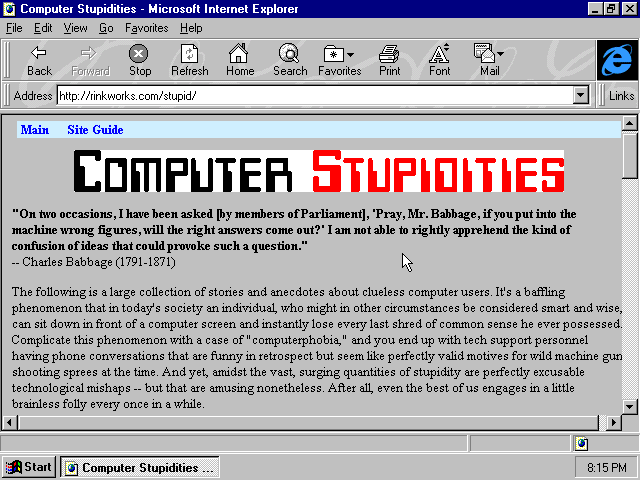Internet Explorer 3
Microsoft Internet Explorer is a web browser application created by Microsoft primarily for Microsoft Windows. It was initially based on Spyglass Mosaic. At various points, Internet Explorer was also available for MacOS, Solaris, and HP-UX.
At its 1995 release, Internet Explorer competed with the Mosaic web browser and Netscape Navigator. Home Internet access was still somewhat new and competed against proprietary services like CompuServe, AOL, and Microsoft's own MSN.
Microsoft aggressively and abusively positioned Internet Explorer as part of their "browser war" to eliminate all competition. Microsoft fiercely pushed third party products to bundle Internet Explorer, and web sites to work only in Internet Explorer.
In 1998, Microsoft was hit with an antitrust suit, much of which involved their browser bundling.
By around 2004, Microsoft had destroyed most of their competition, dominated the browser market, and let IE stagnate until Mozilla.org released Firefox.
After Internet Explorer 11, Microsoft supplanted IE with "Microsoft Edge" which eventually switched to the Google Chrome rendering engine. Something that would have been unthinkable back then.
Internet Explorer is freely redistributable. But is archived here, as much software (stupidly) requires it.
Screenshots
Release notes
Starting with version 3, IE was re-written as a set of modular DLLs that third party applications could call programmatically, with the central IE executable reduced to a loader stub.
It also added ActiveX, a way to embed custom applets. The advantage was they were much faster and more response than scripting as they used compiled CPU native machine code, often written in C/C++, and native Win32 API. The disadvantage was this made them 32-bit Windows, IE, and Intel x86 CPU specific. They could also do anything, including reformat your hard drive.
Internet Explorer 3.0 also adds NTLM authentication, A proprietary method of using Windows NT domain login credentials to authenticate with web servers and proxy servers. Organizations that adopted NTLM therefore automatically locked out all other web browsers. It was not until about 7 years later that Netscape/Mozilla was able to reverse engineer and implement their own version of NTLM.
IE 3 was bundled with Windows 95 OSR 2.0.
Information
- Product type
- Application Web Browser
- Vendor
- Microsoft
- Release date
- 1996
- Minimum CPU
- 80386 DX or better
- User interface
- GUI
- Platform
- Windows
- Download count
- 273 (98 for release)



